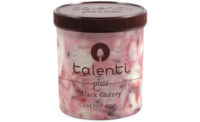Getting the On-Pack Message Right
Effective on-pack messaging is key to ensuring that new packaging features and graphics make a difference.


Frame Changes - One important role of on-pack messaging is to define or “frame” packaging changes in a positive way.

Provide Reassurance - On-pack messaging is vital in providing reassurance, particularly when shoppers encounter a new packaging structure.

Convey Value - We’ve found that the bright yellow color (used on many violators) can have negative associations (tied to low quality).

Highlight Features - When marketers invest in packaging innovation, use of strong on-pack messaging is critical to ensure that shoppers become aware of the feature or benefit.





- A new appearance may drive a second look and/or convey an updated personality, but it is usually not enough to convince competitive users to switch brands.
- A new feature or benefit may be compelling, but it fails to convert new buyers, because so few shoppers even see it upon their first glance at the packaging.
>Finding a Compelling Message
- Content (identifying a compelling claim or message)
- Presentation (ensuring that this content is consistently seen)
>Drawing the Shopper’s Attention
>Ensuring Effective On-Pack Messaging
Looking for a reprint of this article?
From high-res PDFs to custom plaques, order your copy today!











